Text
In case you don’t follow my main blog, the reason why I haven’t made new drawings in a while is that I fucked up my hand and now it hurts
3 notes
·
View notes
Text
pant
Change a single letter and change the word game
I want to play a game with you all.
You have to make a new word by changing only one letter of the last word.
Dirt
122K notes
·
View notes
Text
Broke: "Ich Liebe" uses baking as a metaphor for Germany's love for Italy
Woke: "Ich Liebe" is Ludwig being really excited to share his special interest with someone he cares about
25 notes
·
View notes
Text
People who clearly haven't looked deep enough into Hetalia before talking: Germany is depicted as perfect, logical and flawless, which is problematic
Germany in canon whenever he feels an emotion or must do something without following clear instructions:

586 notes
·
View notes
Text
Me, explaining how much of a shame it is that Roderich doesn't have white as his signature color in canon or in much fanart, despite it historically being the color of Austrian army uniforms, because putting him in white would also have the symbolism of making him bride-coded, alluding to marriage as his favorite diplomatic strategy:

252 notes
·
View notes
Text

Hey there everyone! Razzle Dazzle: A Historical Hetalia Anthology is having a third run-- this time, the focus will be on narrative works, specifically writing and comics!
So, what's the story?
Razzle Dazzle: A Historical Hetalia Anthology is a free digital PG-13 fan anthology for the series Hetalia World Stars themed around the 20th century. For our third run, we want to bring the spotlight on the writers and comic artists in the fandom, and give them a chance to shine!
On April 13th, we'll be opening up contributor applications!
For more information such as the timeline and anthology guidelines, please visit our Carrd below:
https://hwsrazzledazzle.carrd.co/
That's all for now! Stay tuned for further updates!
78 notes
·
View notes
Text
Traditional braiding and hair decorations of Bulgarian girls and beliefs related to them
(Translation of this article by Anelia Krumova)
Little girls belonged to the group of so-called podevki. They usually held their hair in two braids around their ears and scalp, which were tied at the nape of the neck in one or two braids. The order in which the little girls' hairstyles were styled followed the growth of the hair, aiming to achieve a maiden's hairstyle. Braiding began around the ears, catching the short, not yet grown side hair. As the girl grew older, the braid continued to the nape of the neck, and the lower braids were finally formed. In the Sofia region, for example, two kukunduka were made for 9-10 year old girls, then three kukunduka for 13-14 year olds, in order to move on to proper maiden's braiding.
Girls, who reached marriageable age, marked their affiliation with a specific hair styling that immediately distinguished them from bangs. They differed in their open hair and hairstyles from numerous braids, which were complex and difficult to do, but comfortable to wear.
„Lesata“ was a common hairstyle in different areas of Bulgaria. The hair was parted in a straight line, braiding the hair around it. The braids passed along the ears, the nape of the neck and finally on the back, gathered in a common braid. The number of braids was about 22, and the final braid included 6, 9, 12 floors. Another common type of maiden entanglement was that of "rows", which consisted of a large number of small braids - about 60, which went down the shoulders and back, and sometimes reached the knees. The length of the hair and the small entanglements made both types of hairstyles very difficult to perform. Therefore, they were made by skilled women from the family or went to special "weavers".
To make these intricate and beautiful hairstyles, the girls did not rely only on their natural hair, but resorted to attaching additional braids, such as ones made out of fallen hair spun on a distaff for example. This is how the favorite maiden ornament kosichnik/ kosatnik was created at that time. It imitated natural hair and included, in addition to the braids of the girl's own hair, braids woven from threads, embroidered with coins and beads, and even garlic cloves. The kosichnik covered the back and waist, finding the role of a symbol of female fertility.
To give even more beauty to the girl's hair, a variety of woolen ribbons in red were used, on which numerous beads were strung, as well as pompoms, coins, snails, balls of untwisted wool. These strips were placed on the forehead or between the braids. All of them had an "apotropaic" function - the ability to repel evil forces. Because it was believed that the hair, which was exclusively on display for the girls, had to be protected from bad looks, envious or admiring, which carried the so-called uroki - unfriendly forces. For this reason, bright, pierced, shiny, smelly and jingling objects - strong and well-known apotropaic - were attached to the hair. This was done so that people's attention could not be on the hair, but on the decoration, which was able to withstand bad looks.
A maiden, that would make a kitka ( a single or several flowers gathered together) to demonstrate love, and the bachelor, who'd steal it from her if she was in his heart, were symbols of traditional love relationship of the past. This is why, the kitka was invariably present as an element of maiden decoration. Placed behind the year, the kitka symbolised entering marriageable age.
Another maiden's decoration was peacock's feather. It was considered to be the bearer of ancient mythical messages and was used by girls in transition rituals such as lazaruvane, kumichuvane, engagement and wedding. The rest of the time, the feathers of ordinary poultry were used as a substitute. In Sofia area, the expression "girl under a feather" was understood as a girl who is ready to get married.
In conclusion, the girls' hairstyles can be said to be a sign, a message to the public about the readiness, desires and preferences of the girl.




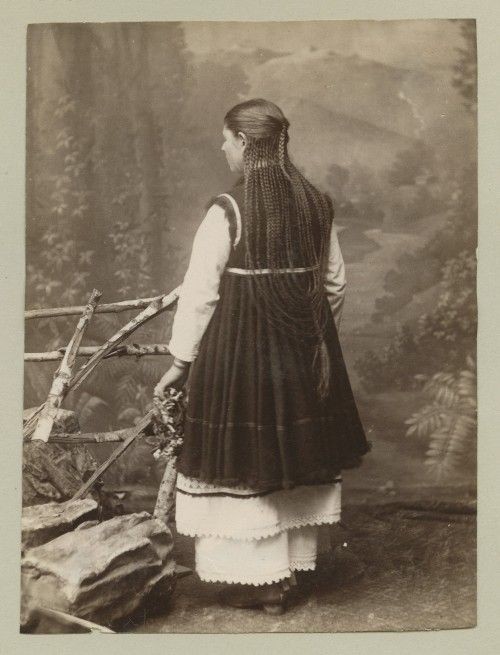
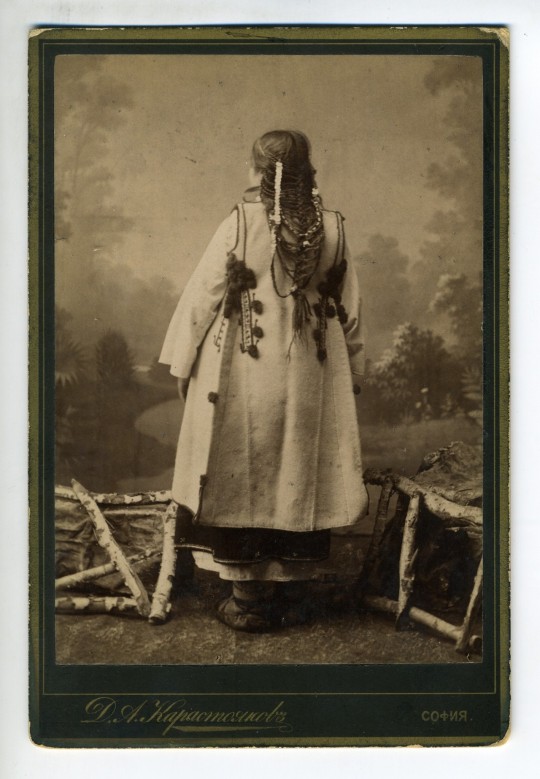
252 notes
·
View notes
Text

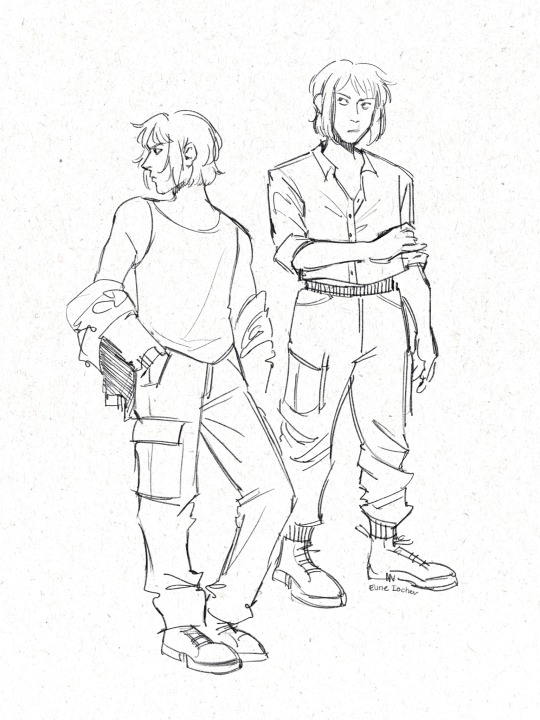
Him
273 notes
·
View notes
Text
Man….. I rlly do fuck with unrequited swissaus
#or do they call it edelweiss#I don’t remember#hws#hetalia#hws switzerland#hws austria#swissaus#I’m rusty af with the ship names don’t @ me
14 notes
·
View notes
Text
6 notes
·
View notes
Text
I need more people to support the idea that Gilbert has poor eyesight and/or color blindness
54 notes
·
View notes
Note
I’ve always wondered how immortality actually works. Like... if their head is cut off, do they grow a new one? What happens if the body is completely destroyed (for example in a nuclear explosion)? If someone buries them alive in a random spot, are they doomed to resurrect and suffocate over and over again forever? (I can’t help but think about how horrifying the idea of being trapped/tortured must be to someone who can’t die...)
this is gonna get into body horror territory— so the usual warnings for death and gore. these are my headcanons:1. basic principle: they are immortal beings wearing meatsuits, in a manner of speaking. their souls are given vitality and tied to this world by the beliefs of humans (ripping a page out of benedict anderson’s “nations are imagined communities” here). so long as this is the case, they cannot die permanently from any injury that would be ordinarily fatal. they will always return. they can get killed temporarily, of course. making for some very eerie lazarus-like resurrections. holy, unholy, cursed? nations are terrible and sublime. 2. coming to your question about nation regeneration regarding decapitation—i like to think It Depends: on whether it’s physically possible to Reunite the Meatsuit in the most convenient manner possible. so if someone tried to bury their head a great distance from the rest of their body—well, then they’ll just reform another head. the other will rot or turn to dust (i haven’t quite decided but the whole aspect of for dust thou art™ is quite appealing, and many of them are tied to the land itself so…why not make the metaphor literal?). but i gotta admit i’m also here for some surreal, absurd horror at times: i’ve definitely drawn Yao sewing on his own head back on. so: they don’t always need to regrow their head, but it happens.3. i’ve written more about Complete Destruction here, but basically, if their mortal body is just obliterated, they can sort of respawn. this level of destruction has to be more extreme than a normal fatal injury. it’s like an extreme reset button where they’ll have to rebuild their entire body from scratch and would take longer than normal healing. and i’m playing with a rough headcanon that they can respawn back “home” instead of where they died in these circumstances. (i’ve a running joke with my friend that arthur would wake up in the muddy banks of the Thames.) still, i don’t want this to be too easy a Get Out of Jail card for them to play, so it’s extremely painful, inconvenient and disorienting to learn how to use your body again so it’s something almost none of them would ever try to trigger intentionally.4. the above point kind of links to your scenario about being buried alive or trapped somewhere. i personally go with the headcanon that at times they may be caught in stages of dying and reviving. like what happens if alfred gets adrift in the ocean during the pacific war? or arthur, well, getting lost in the arctic on an ill-fated, hubristic expedition? hmm. i personally put some limits on to how far they can be caught in situations of eternal torture/cycles of dying and reviving(also because for plot reasons admittedly—can’t have them stuck forever): beyond a certain point, because their souls are always tied to their people, and many have especially strong associations with a particular place, their souls can ‘escape’ that container (demigod-like beings after all) and they can reform elsewhere. not necessarily back home, but basically enough to get free. it’s unpleasant and also inconvenient whenever they do a total respawning, so it’s rare! this may not be a clear example but y’know, that scene of gandalf when he dies in the pit of moria in fellowship of the ring? and is then ‘sent back’ because he’s actually a kind of angelic spirit and all. so yes—kind of like that, except messier and rather more creepy for nations. their soul is immortal, but the price of incarnating in this world is a human body with all its sensations and feelings and messiness.5. this doesn’t mean that nations can’t be held in custody by others—they can. (i’m thinking of all the conquests and wars throughout history). but because nations are aware that if they push another nation’s meatsuit too far, they might get free—it also restrains their behaviour too. a sort of code amongst their kind, maybe. sometimes, of course, it’s other humans doing this—so they don’t know that. in that case, then there’s the respawning and creepy regeneration.
198 notes
·
View notes
Text
Hetalia Human Names
NOTE: This is my personal interpretation and the names may diverge from canon and established fanon. Also I might update this every so often to make it more accurate, depending on the information I find.
Table of Contents
The Main Characters
Western Europe
Northern Europe
Eastern Europe
Southern Europe
Western Asia
South Asia
East Asia
Southeast Asia
Oceania
Micronations
Former nations
The Main Characters
Italy Veneziano: Feliciano Vergano
I chose the name Vergano instead as it keeps the essense of the original surname, but is actually Italian.
Italy Romano: Lovino Vergano
Germany: Ludwig Beilschmidt
Japan: Kiku Honda
Prussia: Gilbert Beilschmidt
America: Alfred Franklin Jones
I like the headcanon of his middle name being "Freedom", but Franklin is my personal favourite.
England: Arthur James Kirkland
I came across this in a fic a while back and never looked back. This man needs a middle name.
France: Francis Bonnefoy
Russia: Ivan Braginsky
China: Yao Wang
Canada: Matthew Williams
Western Europe
Austria: Roderich Edelstein
Belgium: Laura Janssens
Liechtenstein: Erika Vogel
Luxembourg: Henri Janssens
I've also used the name Gabriel before, but it doesn't seem to be used much in Luxembourg, so Henri would be more fitting.
Monaco: Louise Bonnefoy
The name Louise and it's masculine variant, Louis, appear a few times in the Monaguesque royal family.
Netherlands: Willem Janssens
Willem appears a few times in the Dutch royal family, and it sounds a bit older than other suggested names, which reflects his age and general vibes imo. I really like this name.
Switzerland: Sebastian Zwingli
Personally I see his name "Basch" as a nickname for Sebastian. It's also easy to adapt to his official languages: Sebastian/Sébastién/Sebastiano. The Romansh variant would be Bistgaun, but the archaic version seems to be Bastgaun, which is more similar to Basch. I headcanon that he goes by the name "Basch" in all languages to make it more cohesive.
Northern Europe
Denmark: Mathias Rasmussen
I'm from Scandinavia myself and I don't know if it's widespread, but I've heard people say "all Danish people are named Rasmus" more than once, so I like to incorporate that into his surname.
Estonia: Eduard Kaasik
Around 50% of Estonia is covered in forest, and one of the most common tree types is birch. Kaasik is a common surname and means "birch forest".
Finland: Timo Väinämöinen
Iceland: Eiríkur Steinsson
Steinsson means "son of Stein (given name meaning stone)",. Also Emil isn't traditionally Icelandic, but it's widely used. Personally though, I prefer the name Eiríkur.
Latvia: Raivis Bērziņš
The surname Galante corresponds with the modern Latvian opera singer Inese Galante, but I couldn't find anything to suggest it's commonly used or that it's Latvian at all. Bērziņš is one of the most used Latvian surnames and means "birch tree", like Estonia's surname. Personally, I don't see the Baltics as siblings, but I think this would be a cute reference.
Also, based on what I read, surnames became common in Latvia around the 19th century, with Bērziņš being one of them. Latvia could have picked up whatever the people around him (Estonia) was using and made it his own.
Lithuania: Tolys Laurinaitis
Norway: Sigurd Bondevik
Sweden: Berwald Oxenstierna
Eastern Europe
Belarus: Natalya Arlovskaya
Bulgaria: Mihail Petrov Isporov
Isporov is the family name and is derived from an alternative name of Asparukh, the first king of the First Bulgarian Empire.
Czech: Tereza Novakova
Hungary: Erzsébet Héderváry
Moldova: Marcel Popescu
Poland: Feliks Łukasiewicz
Romania: Vladislav Popescu
Slovakia: Jozef Novak
Ukraine: Iryna Chernenko
Southern Europe
Greece: Herakles Karpusi
Portugal: João Silva Ferreira
Spain: Antonio Fernandez Carriedo
Western Asia
Cyprus: Stasinos Karpusi
Stasinos was one of the first European poets who wrote the epic poem Cypria.
Turkey: Sadiq Adnan
TRNC: Tarkan Adnan
South Asia
India: Rajesh Thakur
East Asia
Hong Kong: Leon Wang / Wong Kulung
Macau: Chen Wang
South Korea: Im Yong-soo
Taiwan: Mei Lin
Southeast Asia
Thailand: Prasert Chakri
Vietnam: Lien Nguyen
Africa
Cameroon: Emmanuel Mawdo Ahidjo
Many of the most commonly used forenames in Cameroon are of French or English origins, such as Emmanuel.
Mawdo means ‘elder’ in Fulfulde.
Ahidjo refers to the first president of Cameroon.
Egypt: Gupta Muhammad Hassan
Seychelles: Michelle Mancham
Americas
Cuba: Carlos Machado Rodríguez
Oceania
Australia: Daniel Kirkland
New Zealand: Zachary Kirkland
Micronations
Hutt River: Christopher Kirkland
Kugelmugel: Leopold Edelstein
Ladonia: Erland Oxenstierna
Molossia: Jacob Jones
"JJ" :)
Sealand: Peter Kirkland
Seborga: Romeo Vergano
Okay listen. I have no explaination, I just really like this name. Also, if the names of the trio is Peter, Wendy, and Romeo, they're all named after characters from literature. I think that's fun.
Wy: Wendy Kirkland
Former Nations
Ancient Egypt: Neferure
References the only biological child of Hatshepsut.
Ancient Greece: Helene
Ancient Rome: Marcus Valerius Maximus
Marcus is the praenomina (given name) and refers to how Romulus and Remus were said to have been twins of Mars, the god.
Valerius is the nomen gentilicium (hereditary name) and means “to be strong”.
Maximus is the cognomen and means “the greatest”.
Germania: Alaric
Holy Roman Empire: Otto Beilschmidt
Personally I like the idea that HRE and Germany aren't the same person, but share the same body.
40 notes
·
View notes
Text
Incoming… Hws doodle dump from 2021/2022!!
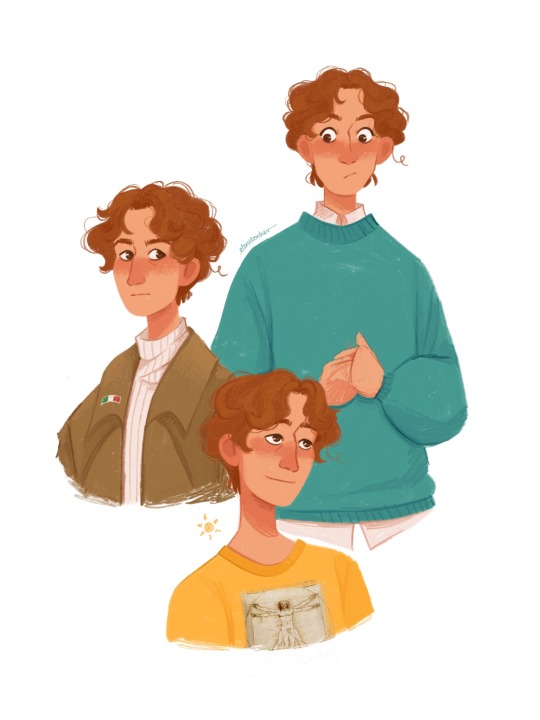
Feli
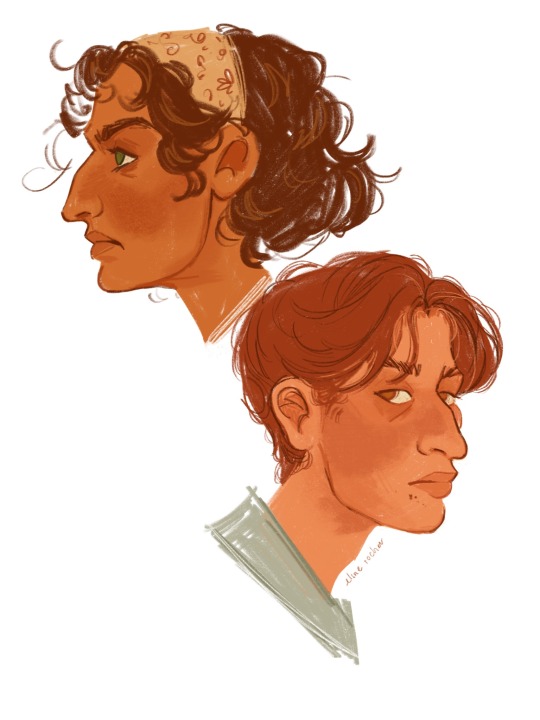
Feli and fem!Romano
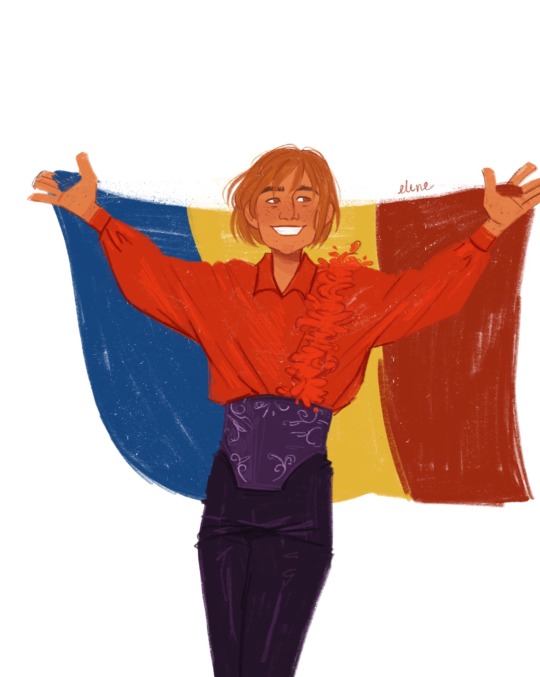
Hetavision Romania 👀

Romano’s eczema + depression hoodie
94 notes
·
View notes
Text

Sebastian and Lilian
Reference under the cut!

#i tried to replicate Lili’s cold dead eyes but helloooo my girl deserves better#immortal humans au#basch zwingli#hws switzerland#hws liechtenstein#Lilian Vogel#that’s the name I gave her#live with it#hws#Hetalia#hws fanart#Hetalia fanart
201 notes
·
View notes
Text
Y’all know I would literally, actually die for nyo Lithuania, nyo Switzerland and nyo Romano right
8 notes
·
View notes
Note
Your post describing your AU was recommended on my dashboard and I'm already hooked! I love AUs that critique the standard worldbuilding, especially the decision to make personifications represent nations. My problem with using nations is that the modern concept of nations has barely existed for a thousand years. Why would immortal humans represent only the last millenium of human society? Does this mean that everything that happened before societies structured themselves into nations wasn't important enough for immortals to be born? That modern nations are the perfect structure for society?
My immortals represent their cultures instead, because cultures have existed as long as humans have and are inseperable from us. A culture isn't a formal system like a nation, but rather social bonds, traditions, values, and experiences that can't be neatly defined. The immortals can have a lot of flexibility in their characterization because of this. Regular humans don't realize that they're immortal and don't give them special treatment, which I think is a neat symbolism for how nobody notices their own culture because it feels so normal to them. I want them to live and grow with the people and society, not be isolated for their magical abilities. The immortals aren't "a mathematically average version" of a person from their culture either. They have unique personalities, flaws and worldviews that were shaped by their life experiences, just like how every person in the same culture is unique. I rarely see people who think of the immortals without a political role, but it creates much more interesting characters and discussions in my opinion.
Why the immortals exist is also a very interesting discussion to me. I would say that mine exist for a philosophical reason. They're the physical manifestations of the abstract concept of culture. Out-of-universe, their existence raises questions about human experiences and societies throughout history. But because humans in-universe don't know they exist, they're silent observers of our world. What are your thoughts about why immortals exist in your universe? What effect and significance do they have on society?
Wow, first of all I love what you have to say and I agree with your thoughts about cultures vs. nations! I really like your take.
You’re asking tough questions 😅 If I’m being honest I haven’t done much planning on this au yet, and I’m still gathering ideas and such, but these questions are really inspiring!
I think I’ve always pictured the immortals as more passive observers doing their own thing, and haven’t thought much about their impact/significance on society, but you just made me start considering it… first of all, having them be manifestations of culture is intriguing, especially more so than having them just be immortal humans for no reason at all. Though it can be difficult to properly and respectfully try and represent entire cultures through individual people. I think it’s a project that can turn out really good if a lot of thought is put into it.
Anyways takk for ask’en, jeg vil gjerne høre mer av hva du tenker altså!
3 notes
·
View notes